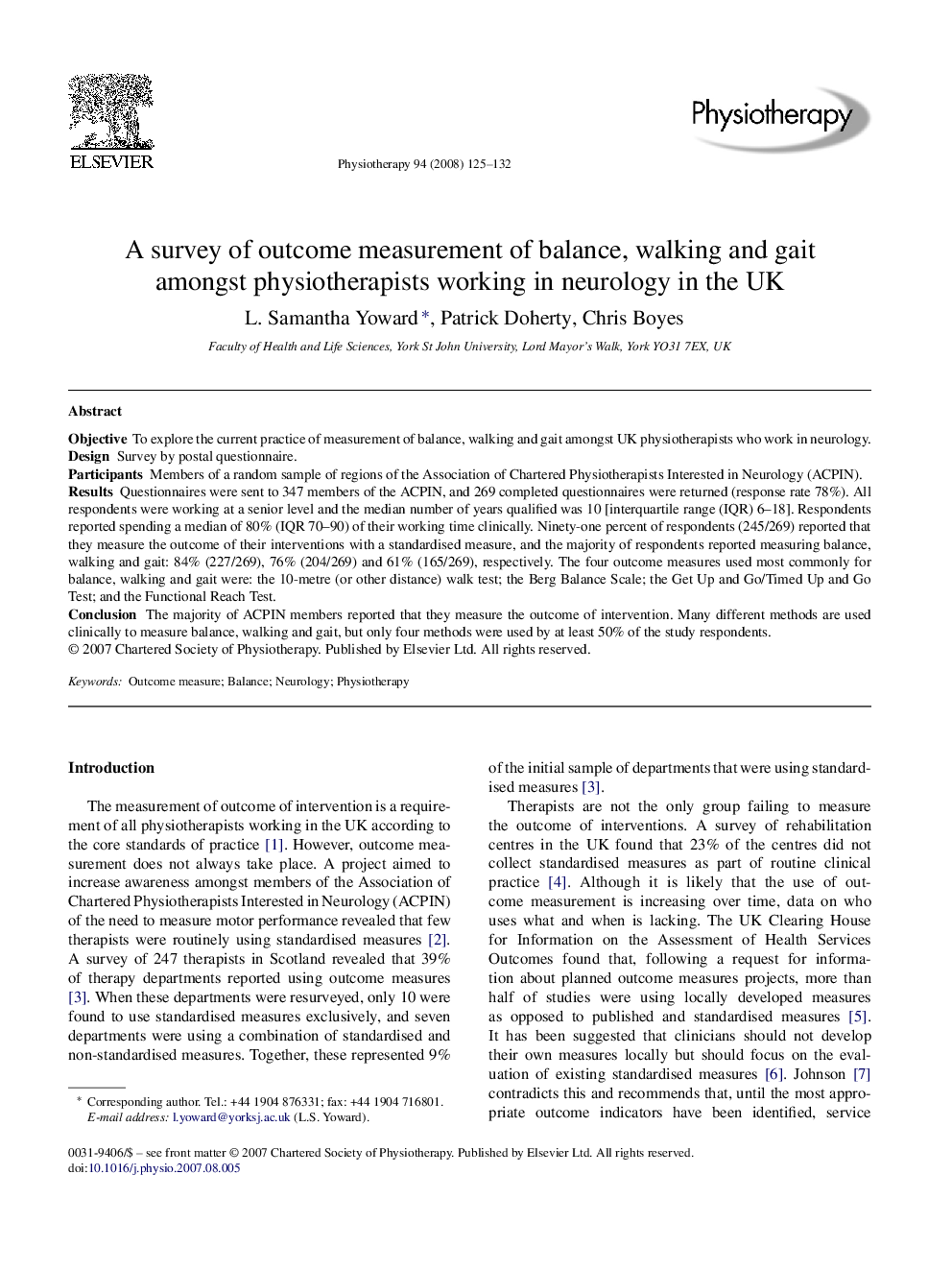| Article ID | Journal | Published Year | Pages | File Type |
|---|---|---|---|---|
| 2627642 | Physiotherapy | 2008 | 8 Pages |
ObjectiveTo explore the current practice of measurement of balance, walking and gait amongst UK physiotherapists who work in neurology.DesignSurvey by postal questionnaire.ParticipantsMembers of a random sample of regions of the Association of Chartered Physiotherapists Interested in Neurology (ACPIN).ResultsQuestionnaires were sent to 347 members of the ACPIN, and 269 completed questionnaires were returned (response rate 78%). All respondents were working at a senior level and the median number of years qualified was 10 [interquartile range (IQR) 6–18]. Respondents reported spending a median of 80% (IQR 70–90) of their working time clinically. Ninety-one percent of respondents (245/269) reported that they measure the outcome of their interventions with a standardised measure, and the majority of respondents reported measuring balance, walking and gait: 84% (227/269), 76% (204/269) and 61% (165/269), respectively. The four outcome measures used most commonly for balance, walking and gait were: the 10-metre (or other distance) walk test; the Berg Balance Scale; the Get Up and Go/Timed Up and Go Test; and the Functional Reach Test.ConclusionThe majority of ACPIN members reported that they measure the outcome of intervention. Many different methods are used clinically to measure balance, walking and gait, but only four methods were used by at least 50% of the study respondents.
